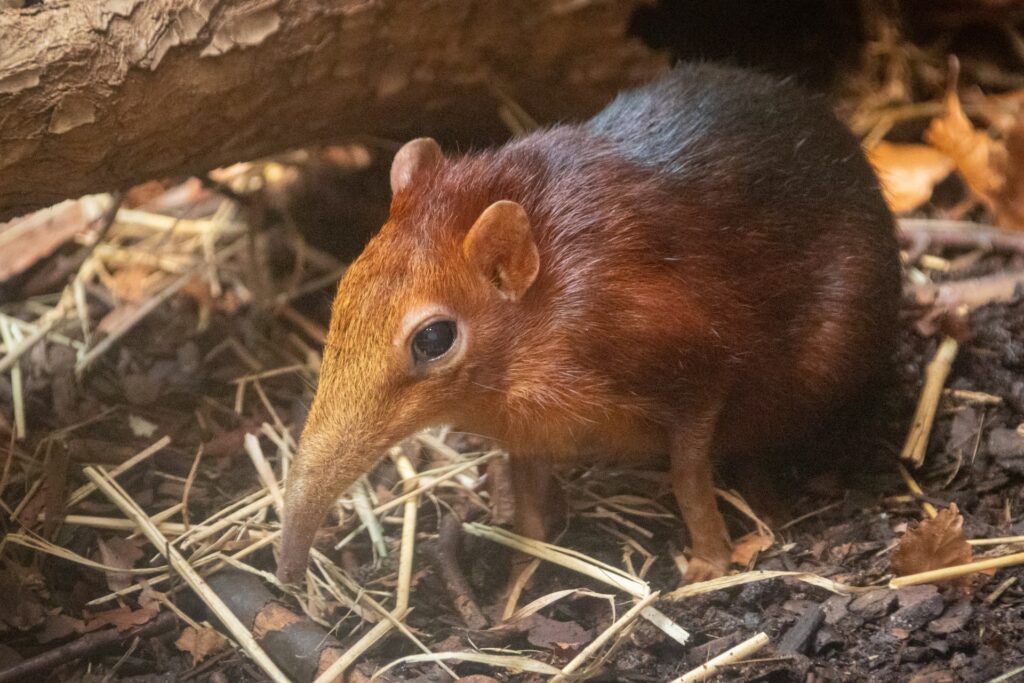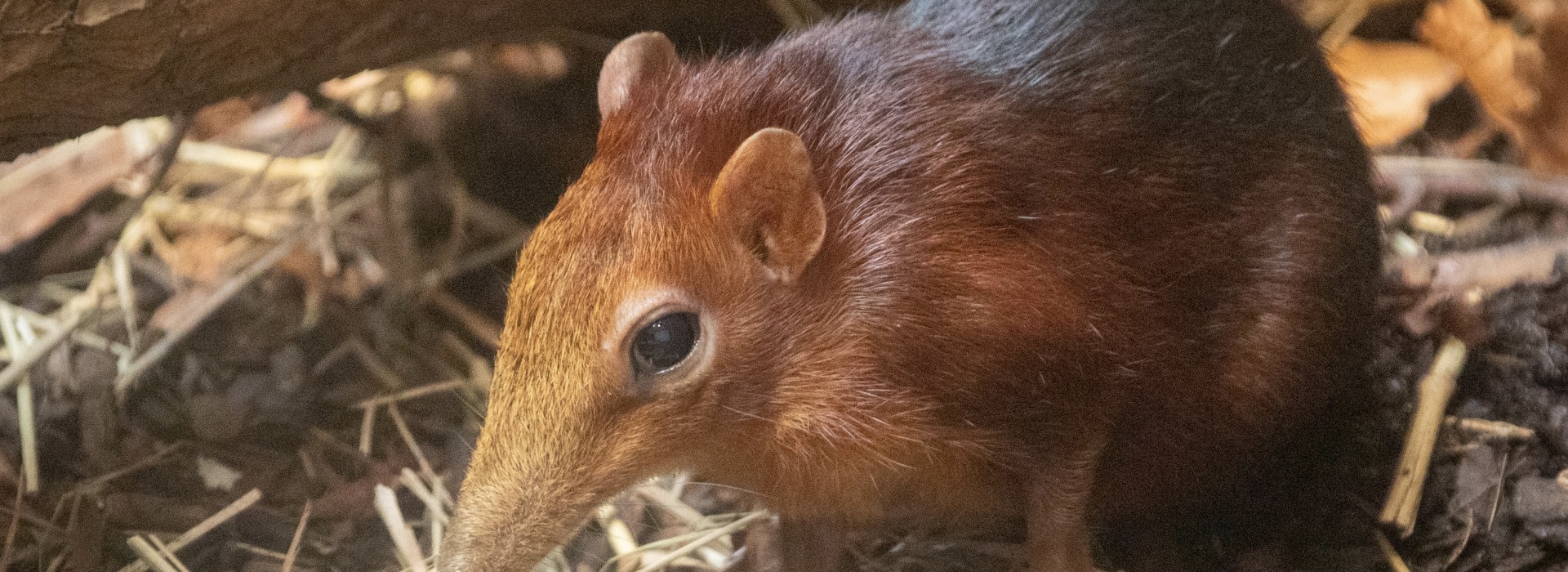ANIMAL: Black & Rufous Giant Elephant Shrew Rhynchocyon petersi Type of Animal: Elephant Shrew Habitat: Forests, dense woodlands, montane grassland, montane shrubland Location(s): SE Kenya & NE Tanzania Appearance: Small w/ long trunk-like snout, front fur reddish-brown, back fur black, big eyes on side, reddish-orange face, hindlimbs much longer than forelimbs Food/Diet: Insects, insect larvae, centipedes, millipedes, worms, spiders, fruits, seeds, buds, vegetables, plant matter Status in Wild: Stable Conservation: Breeding in zoos Lifestyle: Monogamous pairs Additional Info: Called: Male: Boar Female: Sow Young: Shrewlet Group: Pair Weight: 1-1.5 lbs Gestation: 1.5 months Life Span: 2.5-5 years Height: 10 in Body Length: 9-12 in Tail Length: 10 in Main predators are raptors, snakes, & carnivorous/omnivorous mammals. Also called Black & Rufous Sengi, Zanj Elephant Shrew, & Peter’s Elephant Shrew. Females give birth to 1-2 young, having up to 4 litters per year & breed year-round. Active during the day (diurnal). Rest at night in nests constructed of leaves/other vegetation. Territories have up to 10 nests. Have excellent senses of smell, hearing, & sight. Very shy in the wild. Rhynchocyon is Ancient Greek for dog snout. Get name from long trunk-like snout. When foraging, they use snouts to dig invertebrates from soil & use tongues to lick them up. Sexually mature at 1.5 months old. Pairs guard 2.47-4.2 acres & mark territories w/ scent glands on undersides of tail. When pursued, they’ll take refuge in hollow logs/tree trunks/shallow burrows. Bond between parents & offspring fairly weak. While stable & increasing, threats like deforestation, hunting for meat, charcoal production, limited range, & timber use for woodcarving/firewood still loom. Because of using snout for digging through leaf litter, may aid in nutrient turnover, in turn aiding plant growth. Fun Fact(s): They can reach speeds of 18 mph. Sometimes called “jumping shrews” due to jumping abilities-can jump 3 ft in air. While called shrews, they’re not related to true shrews. Most closely related to aardvarks, otter shrews, tenrecs, & golden moles. Also distantly related to elephants, hyraxes, & manatees/dugongs. Some of the largest brains of any small mammal. Females undergo menstrual cycle similar to that of human females.

